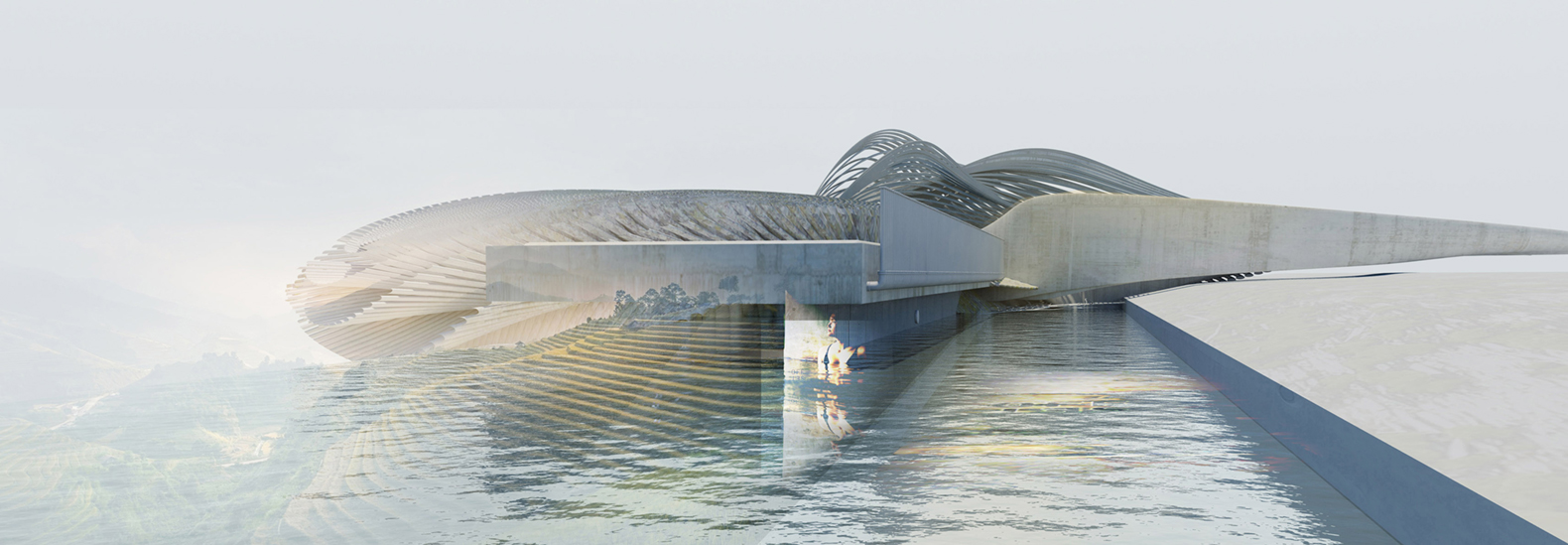
This unique reservoir and spa design by Margot Krasojević Architecture for the Ilam District of Eastern Nepal proposes a fog-harvesting structure to help conserve the area’s water and natural environment. The conceptual project would use a network of solar pumps, pipes and valves as well as a system of reservoirs connected to suspended polypropylene fog nets. Once completed, it would have the ability to produce an average of 3,000 to 5,000 liters of filtered water per day.
Continue reading below
Our Featured Videos
The region is known for its many tea plantations, a subtropical climate, a range of different altitudes and high humidity, all of which combine to create the perfect conditions for fog formation. Rather than using up precious water for the agricultural landscape, this hydrotherapy health retreat is focused on using a fog net to capture the air’s moisture — with the added bonus of providing filtered water to nearby farms.
Related: Portable fog-harvesting AQUAIR harvests clean drinking water from thin air

According to the architect, the practice of collecting fog and condensation is rooted in ancient traditions, from the Namib Desert in Africa to dew ponds in Southern England. This contemporary adaptation will use mesh fog nets draped and embedded into the site’s ledge and woven to capture the most water droplets depending on the wind direction. The water droplets that make up the fog are obstructed by the mesh. Then, these droplets flow through the filters and trickle into a collection trough below.

The water is then funneled through a pipe network and stored into three pools, one inside to anchor it to the site and two to supply the spa and to be used for agricultural irrigation and drinking water. The fog nets are kept clean and free from toxins, mold and microorganisms using an electrical current. The current will loosen and dislodge airborne pollutants and dust.

The location of the project was determined based on where could provide the best conditions for harvest and maximum output efficiency. The nets are hung in sections to allow for adaptation and to accommodate the natural contours of the property.
Images via Margot Krasojević

